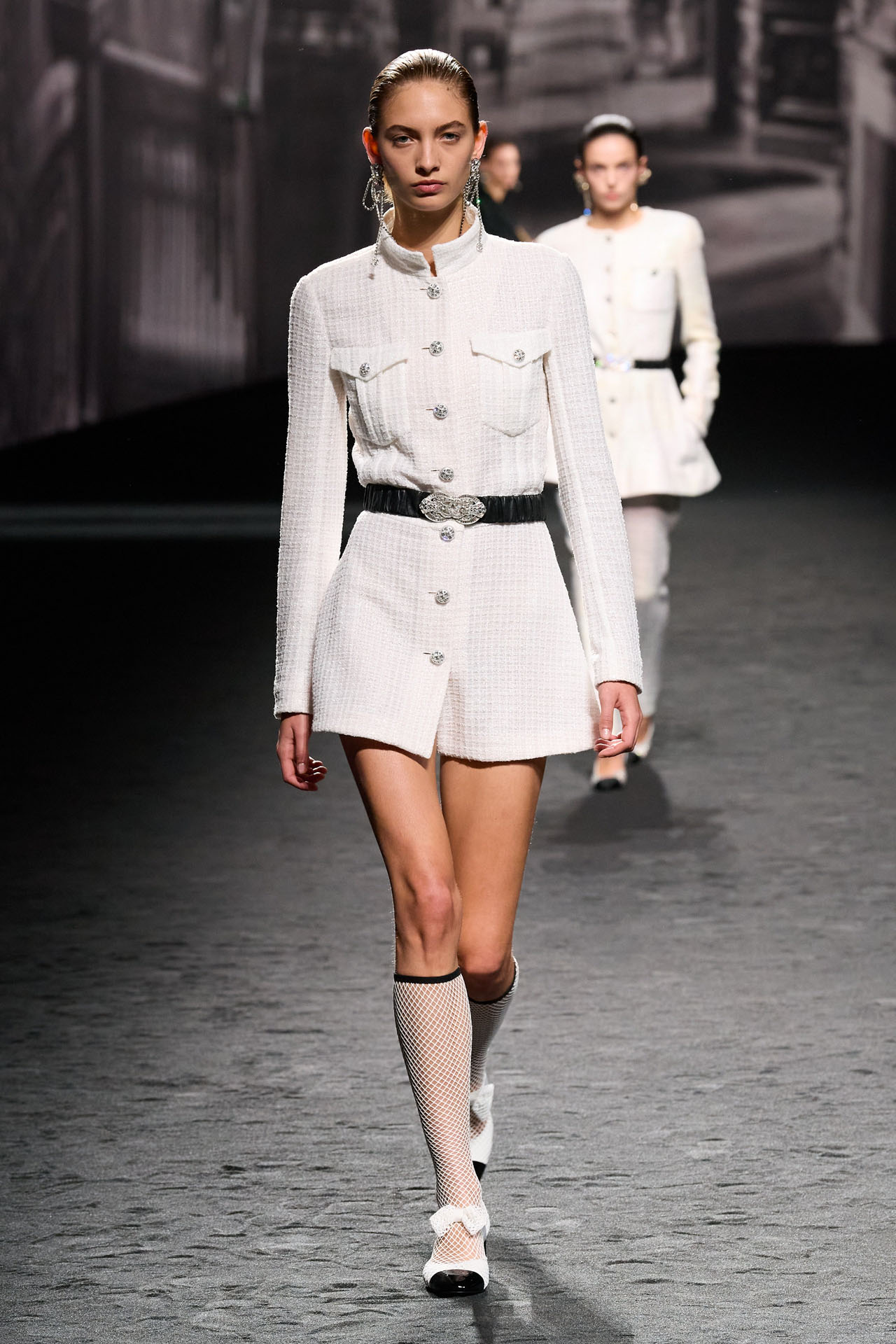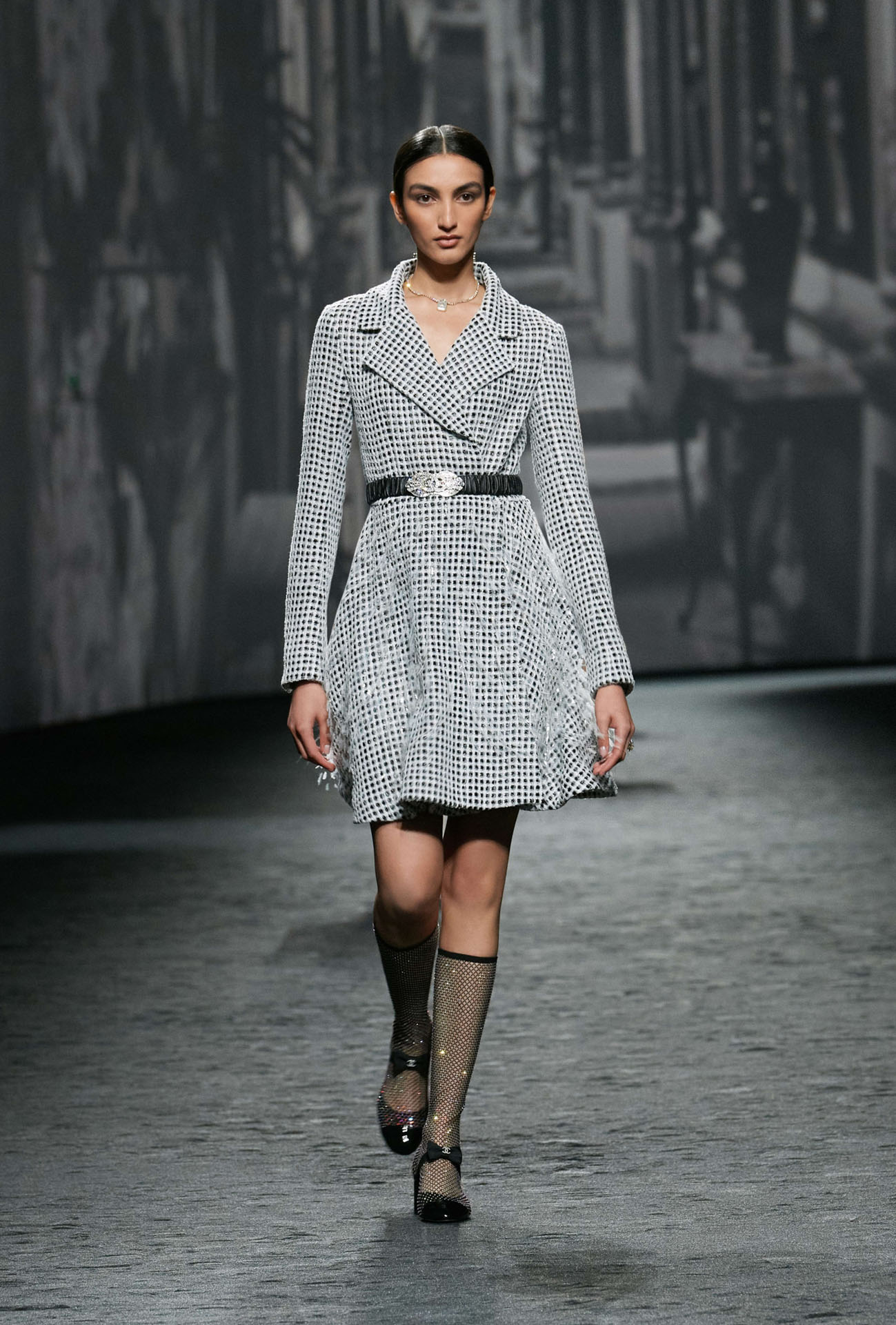VIRGINIE VIARD IS CONTINUING CHANEL’S LEGACY, BUT ON HER TERMS
BY RHIANNA JONES

Out of all the brands around the globe, Chanel needs the least introduction. Everything from the double CC logo and sumptuous quilted bags to boule jackets are not only instantly recognizable, but garner instant clout. A Chanel bag is a better investment than a new car, for its value forever appreciates, even amid inflation. And with his stark white ponytail, skin-tight suiting, and signature sunnies, Karl Lagerfeld was equally synonymous with the brand. His sudden death in February 2019 left magnanimous shoes to fill. Virgine Viard, Lagerfeld’s proclaimed “right and left arm,” was tapped to take King Karl’s baton, debuting her first collection for the house in March 2019.

While Coco Chanel and Lagerfeld were global celebrities, Viard has been humbly hiding behind the scenes, though equally woven into Chanel’s DNA. She started her journey with the house as an intern in 1987. Viard’s fervor for fashion was born while exploring her grandpar- ent’s silk factory, which led to an interest in costume design. Even at a young age, her finesse for fabrication was so advanced, Lagerfeld himself suggested she intern at Chanel’s haute couture embroi- dery, perhaps the house’s highest honor. From her first stitch, Lagerfeld kept Virginie under his impeccably tailored wing, bringing her to Chloé in 1992 when he was asked to reinvigorate the brand, where he remained for five years until Stella McCartney came calling. From there, the dynamic duo returned to Chanel, until they finally parted in 2000 when Viard moved to RTW, where she slowly honed her talents for decades.

The story goes that Viard’s first taste of Chanel came in her youth, as the guest of a family friend at one of Lagerfeld’s notoriously extravagant haute couture shows. She thought it was “horrible” and “so old,” which is the same matter-of- factness she carries with her today. Contrary to most designer appointments of late (where the creative director only enhances the brand’s clout and celebrity, à la Pharrel at Louis Vuitton), Viard is perhaps the least known name imaginable to lead the most famous brand on earth. This anonymity, however, is synonymous with her vision, scaling down the pomp and performance and leaning into the chic craftsmanship of her savoir-faire.
Lagerfeld was the defining force behind Chanel’s masterful legacy, but over time, Viard’s ideas and influence began to surface in the collections. Where Lagerfeld was fastidiously forward- focused, embracing innovative fabrics and techniques like laser-cutting and neo- prene, Viard was a nostalgist, stirred by wayward romance. Viard admittedly didn’t even wear Chanel while working there. She preferred the youthful irreverence of Helmut Lang and Martin Margiela.

In the words of longtime Chanel muse Caroline de Maigret, “Gabrielle [Coco] wanted to be free; she wanted to be able to jump on a horse, and go dancing like crazy, and then go to work. And so she invented comfortable clothes. Virginie is answering the same question of what do we want now.” Just as Coco wanted to liberate women from the constraints of cinched waists and corsetry, Viard is driven to make today’s women feel empowered and free. She’s not here to appease the male gaze or garner head- lines; she designs through a lens of ease and elegance, inviting women to feel effortlessly chic in the skin they’re in.
Each of her collections flows seamlessly from one to the next, a smattering of relaxed yet sumptuous suits, double- breasted mini dresses, silk pajama sets– all the heavy hitters you’d expect from Chanel. But make no mistake, the creative director intentionally appears in the narrative woven into each season’s story. The unassuming Viard leaves the spotlight for her designs (she lives humbly in the countryside), and while some designers want their pieces to scream logomania, Viard puts her pride in the backseat.
